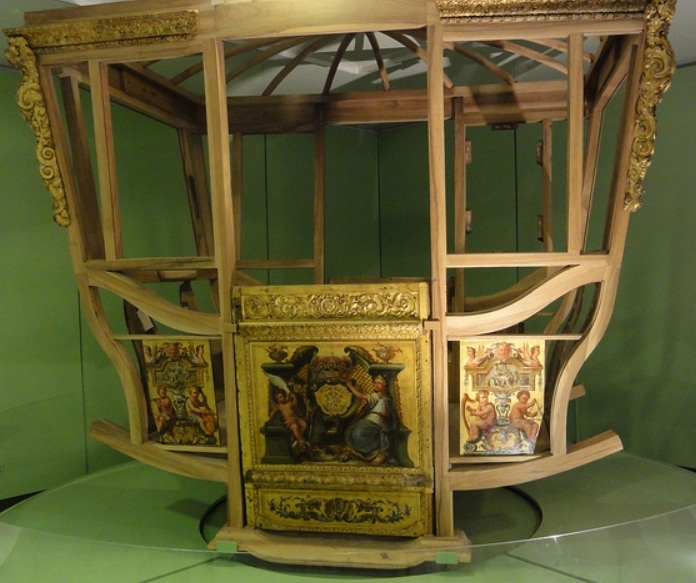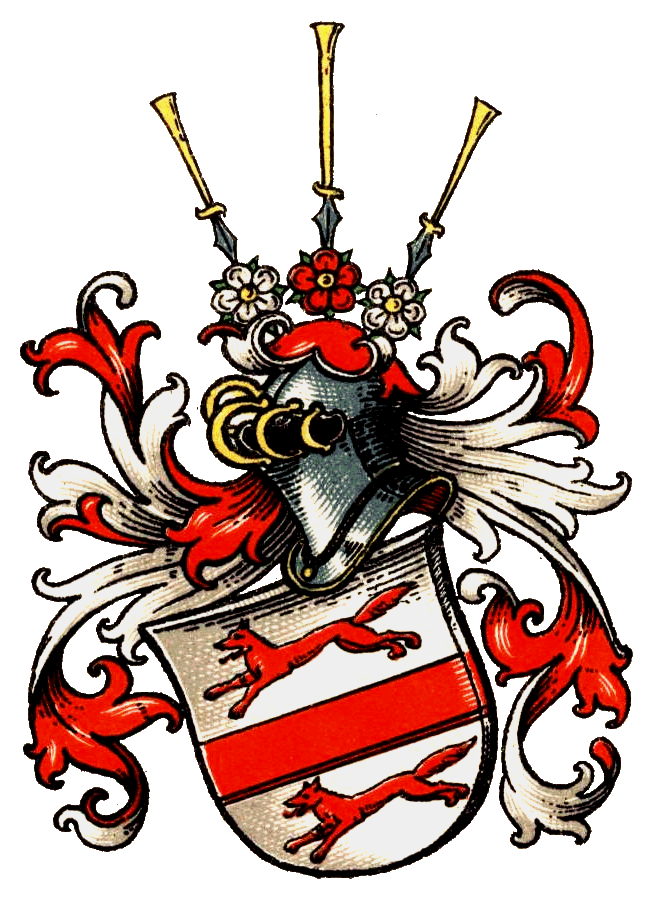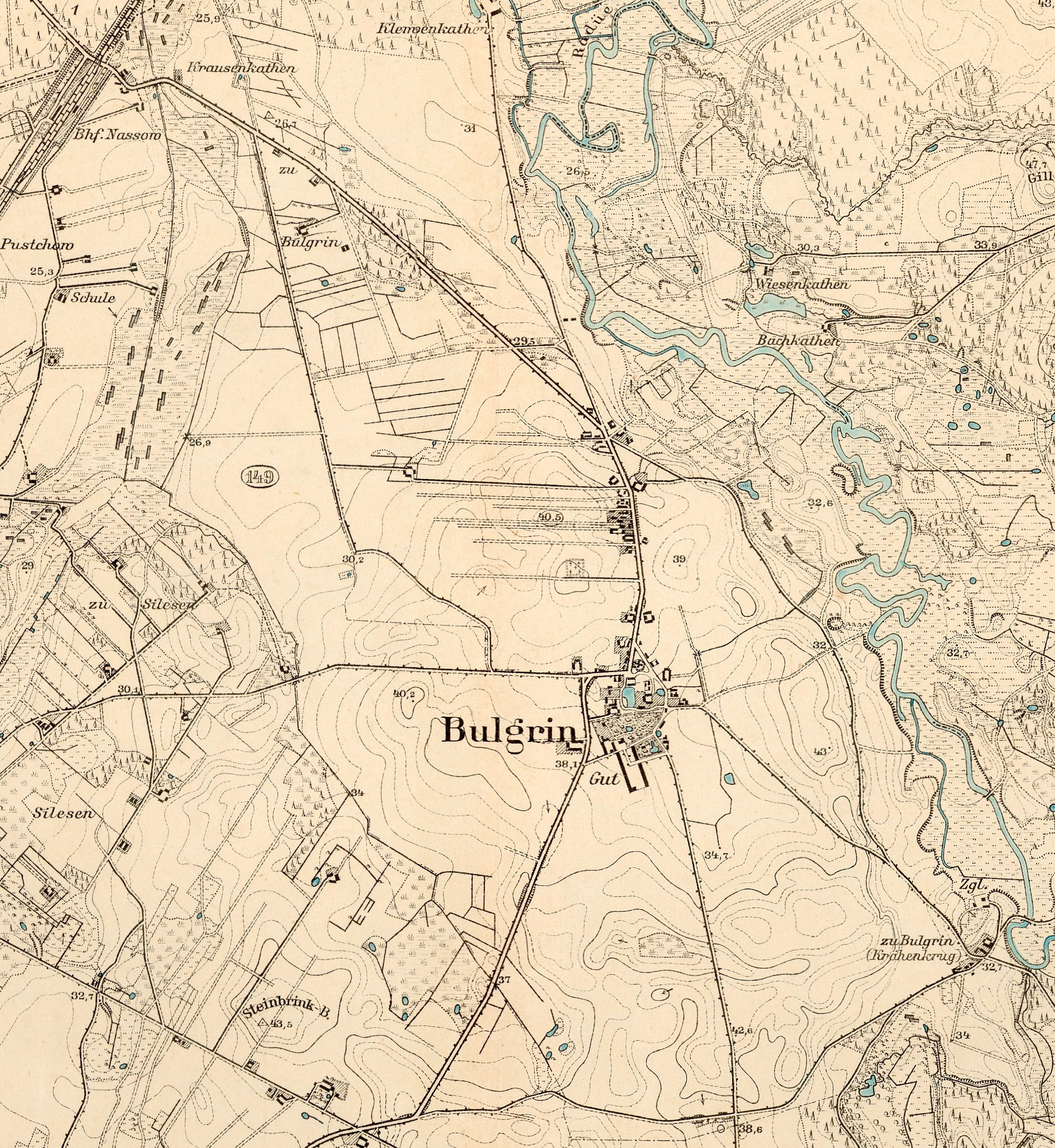|
Henning Alexander Von Kleist
Henning Alexander von Kleist (1676/77–1749) was an 18th-century Prussian field marshal. He fought in the War of Spanish Succession, the Great Northern War, and in the Wars of Austrian Succession. In particular, his actions at the Battle of Mollwitz brought him acclaim, although he had long been a stalwart supporter of Prussian military developments by the Prussian kings Frederick (1740–1786) and Frederick William I (1713–1740). Family HZenning belonged to an old Pomeranian Kleist family that stemmed from the year 1175, and the family served the Duke Bogislaw X, Duke of Pomerania in his wars. In the 14th century, the family divided into three lines, from three brothers. The oldest line was the Dubberow-Tuchow line; the Muttrin-Damen line was second, and the third was Bilnow-Raddatz, which ended in 1784.Artikel, Kleist, Henning Alexander von“ von Heinrich Kypke in: Allgemeine Deutsche Biographie, herausgegeben von der Historischen Kommission bei der Bayerische ... [...More Info...] [...Related Items...] OR: [Wikipedia] [Google] [Baidu] |
Radacz
Radacz (german: Raddatz) is a village in the administrative district of Gmina Borne Sulinowo, within Szczecinek County, West Pomeranian Voivodeship, in north-western Poland. The village is situated in the historic region of Farther Pomerania. It lies approximately north of Borne Sulinowo, west of Szczecinek, and east of the regional capital Szczecin. History The settlement was first mentioned in a 1403 deed, when the area was part of the Imperial Duchy of Pomerania. The estates were held by the Kleist noble family. After the Griffin dukes became extinct, Raddatz was incorporated into the Brandenburg-Prussian province of Pomerania in 1653. The parish church was erected in 1744; it housed the personal carriage of the Polish king John III Sobieski, which was brought here by Field Marshal Henning Alexander von Kleist in the First Silesian War and rebuilt as a pulpit (today on display in the Museum of King John III's Palace at Wilanów). The von Kleist dynasty held the ma ... [...More Info...] [...Related Items...] OR: [Wikipedia] [Google] [Baidu] |
Kleist Family
The House of Kleist is the name of an old and distinguished Pomeranian Prussian noble family, whose members obtained many important military positions within the Kingdom of Prussia and later in the German Empire. Notable members * Henning Alexander von Kleist (1677–1749). Prussian field marshal. * Ewald Jürgen Georg von Kleist (c. 1700–1748); co-inventor of the Leyden jar * Ewald Christian von Kleist (1715–1759); German poet and soldier * Barbara Sophia von Kleist, mother of Adam Stanisław Grabowski (1741–1766) Prince-Bishop of Ermland/ Bishopric of Warmia * Friedrich Emil Ferdinand Heinrich Graf Kleist von Nollendorf (April 9, 1762 – February 17, 1823), born and died in Berlin, was a Prussian field marshal *Heinrich von Kleist (October 18, 1777 – November 21, 1811), German poet, dramatist, novelist and short story writer. The Kleist Prize, a prestigious prize for German literature, is named after him * Karl Wilhelm Heinrich von Kleist (1836–1917), Genera ... [...More Info...] [...Related Items...] OR: [Wikipedia] [Google] [Baidu] |
Blenheim Order Of Battle
The following units and commanders fought in the Battle of Blenheim during the War of the Spanish Succession on August 13, 1704. Allied Army Captain General John Churchill, 1st Duke of Marlborough * Unless otherwise noted, all infantry units are composed of one battalion. Blenheim Column Centre Lieutenant General Charles Churchill Right, Army of Imperial Austria Field Marshal Prince François Eugène von Savoy-Carignan Franco-Bavarian Army Camille d'Hostun de la Baume, Duc de Tallard, Marshal of France Blenheim Wing Command Lieutenant General Philippe, Marquis de Clérambault Maréchal de Camp, the Marquis de Blansac Between Blenheim and Oberglauheim Marquis de Montpeyroux The Army of the Elector of Bavaria Prince Maximillian II Emmanuel Wittelsbach, Elector of Bavaria Second in command: Marshal Ferdinand de Marsin Ferdinand, comte de Marsin (or ''Marchin'') (February 10, 1656 – September 9, 1706) was a French general and diplomat, who was Marshal of Fr ... [...More Info...] [...Related Items...] OR: [Wikipedia] [Google] [Baidu] |
Battle Of Blenheim
The Battle of Blenheim (german: Zweite Schlacht bei Höchstädt, link=no; french: Bataille de Höchstädt, link=no; nl, Slag bij Blenheim, link=no) fought on , was a major battle of the War of the Spanish Succession. The overwhelming Allied victory ensured the safety of Vienna from the Franco-Bavarian army, thus preventing the collapse of the reconstituted Grand Alliance. Louis XIV of France sought to knock the Holy Roman Emperor, Leopold, out of the war by seizing Vienna, the Habsburg capital, and gain a favourable peace settlement. The dangers to Vienna were considerable: Maximilian II Emanuel, Elector of Bavaria, and Marshal Ferdinand de Marsin's forces in Bavaria threatened from the west, and Marshal Louis Joseph de Bourbon, duc de Vendôme's large army in northern Italy posed a serious danger with a potential offensive through the Brenner Pass. Vienna was also under pressure from Rákóczi's Hungarian revolt from its eastern approaches. Realising the danger, the Duk ... [...More Info...] [...Related Items...] OR: [Wikipedia] [Google] [Baidu] |
Leopold I, Prince Of Anhalt-Dessau
Leopold I, Prince of Anhalt-Dessau (3 July 1676 – 7 April 1747) was a German prince of the House of Ascania and ruler of the principality of Anhalt-Dessau from 1693 to 1747. He was also a ''Generalfeldmarschall'' in the Prussian army. Nicknamed "the Old Dessauer" (German: ''der alte Dessauer''), he possessed good abilities as a field commander, but was mainly remembered as a talented drillmaster who modernized the Prussian infantry. Appointed by Frederick I to the rank of field marshal in 1712, Leopold distinguished himself for his success during the War of the Spanish Succession. He was later appointed the commander of the Prussian-Saxon army during the Great Northern War against Sweden. Leopold was a personal friend of Frederick William I. The last great achievement of his military career was commanding the Prussian troops to victory over the Saxons at the Battle of Kesselsdorf in 1745 during the Second Silesian War. Early life Leopold was born in Dessau as the ninth of te ... [...More Info...] [...Related Items...] OR: [Wikipedia] [Google] [Baidu] |
Peace Of Utrecht
The Peace of Utrecht was a series of peace treaties signed by the belligerents in the War of the Spanish Succession, in the Dutch city of Utrecht between April 1713 and February 1715. The war involved three contenders for the vacant throne of Spain, and involved much of Europe for over a decade. The main action saw France as the defender of Spain against a multinational coalition. The war was very expensive and bloody and finally stalemated. Essentially, the treaties allowed Philip V (grandson of King Louis XIV of France) to keep the Spanish throne in return for permanently renouncing his claim to the French throne, along with other necessary guarantees that would ensure that France and Spain should not merge, thus preserving the balance of power in Europe. The treaties between several European states, including Spain, Great Britain, France, Portugal, Savoy and the Dutch Republic, helped end the war. The treaties were concluded between the representatives of Louis XIV of ... [...More Info...] [...Related Items...] OR: [Wikipedia] [Google] [Baidu] |
Frederick I Of Prussia
Frederick I (german: Friedrich I.; 11 July 1657 – 25 February 1713), of the Hohenzollern dynasty, was (as Frederick III) Elector of Brandenburg (1688–1713) and Duke of Prussia in personal union (Brandenburg-Prussia). The latter function he upgraded to royalty, becoming the first King in Prussia (1701–1713). From 1707 he was in personal union the sovereign prince of the Principality of Neuchâtel (german: Fürstentum Neuenburg). Biography Family Born in Königsberg, Frederick was the third son of Frederick William, Elector of Brandenburg by his father's first marriage to Louise Henriette of Orange-Nassau, eldest daughter of Frederick Henry, Prince of Orange and Amalia of Solms-Braunfels. His maternal cousin was King William III of England. Upon the death of his father on 29 April 1688, Frederick became Elector Frederick III of Brandenburg and Duke of Prussia. Right after ascending the throne Frederick founded a new city southerly adjacent to Dorotheenstadt and named ... [...More Info...] [...Related Items...] OR: [Wikipedia] [Google] [Baidu] |
Sobieski Carriage 02
Sobieski (singular masculine; singular feminine: Sobieska; plural: Sobiescy) is a Polish noble family name, and may refer to: People * Sobieski family, or the House of Sobieski, a notable family of Polish nobility, whose members included: ** Marek Sobieski (1549/1550–1605), voivode of Lublin, father of Jakub Sobieski ** Jakub Sobieski (1590–1646), father of King John III Sobieski ** John III Sobieski (1629–1696), King of the Polish–Lithuanian Commonwealth from 1674 to 1696 ** Aleksander Benedykt Sobieski (1677–1714), son of King John III Sobieski ** Jakub Ludwik Sobieski (James Louis Henry Sobieski (1667–1737), son of King John III Sobieski and last male line descendant of Marek Sobieski ** Teofila Zofia Sobieska (1607–1661) ** Katarzyna Sobieska (1634–1694) ** Konstanty Władysław Sobieski (1680-1726) ** Maria Teresa Sobieska (1673–1675) ** Teresa Kunegunda Sobieska (1676–1730), Polish princess ** Maria Klementyna Sobieska (1702–1735), wife of James Franci ... [...More Info...] [...Related Items...] OR: [Wikipedia] [Google] [Baidu] |
Battle Of Malplaquet
The Battle of Malplaquet took place on 11 September 1709 during the War of the Spanish Succession and was fought between a French army commanded by the Duke of Villars and a Grand Alliance force under the Duke of Marlborough. In one of the bloodiest battles of the 18th century, the Allies won a narrow victory but suffered heavy casualties, while the French were able to withdraw in good order. At the start of 1709, the French state seemed on the verge of collapse, its treasury empty and food scarce while Allied advances in 1708 left the kingdom open to an invasion. These factors made the Allies overconfident and their excessive demands led to the collapse of peace talks in April. Villars had been instructed to avoid battle but after the capture of Tournai in early September, the Allies moved against Mons and Louis XIV of France ordered him to prevent its loss. Although the two armies made contact on 10 September, Marlborough delayed his attack until the next day, giving Villar ... [...More Info...] [...Related Items...] OR: [Wikipedia] [Google] [Baidu] |
Brussels
Brussels (french: Bruxelles or ; nl, Brussel ), officially the Brussels-Capital Region (All text and all but one graphic show the English name as Brussels-Capital Region.) (french: link=no, Région de Bruxelles-Capitale; nl, link=no, Brussels Hoofdstedelijk Gewest), is a region of Belgium comprising 19 municipalities, including the City of Brussels, which is the capital of Belgium. The Brussels-Capital Region is located in the central portion of the country and is a part of both the French Community of Belgium and the Flemish Community, but is separate from the Flemish Region (within which it forms an enclave) and the Walloon Region. Brussels is the most densely populated region in Belgium, and although it has the highest GDP per capita, it has the lowest available income per household. The Brussels Region covers , a relatively small area compared to the two other regions, and has a population of over 1.2 million. The five times larger metropolitan area of Bruss ... [...More Info...] [...Related Items...] OR: [Wikipedia] [Google] [Baidu] |
Białogórzyno
Białogórzyno (German: ''Bulgrin'') is a village in the administrative district of Gmina Białogard, within Białogard County, West Pomeranian Voivodeship, in north-western Poland. It lies approximately north-east of Białogard and north-east of the regional capital Szczecin. As of the census of 2011, the village has population of 400. See also History of Pomerania The history of Pomerania starts shortly before 1000 AD with ongoing conquests by newly arrived Polans rulers. Before that, the area was recorded nearly 2000 years ago as Germania, and in modern-day times Pomerania is split between Germany and Po ... References Villages in Białogard County {{Białogard-geo-stub ... [...More Info...] [...Related Items...] OR: [Wikipedia] [Google] [Baidu] |


.jpg)



